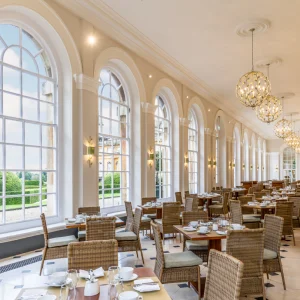
Adam Caruso, of London-based practice Caruso St John, values the past, and in his forthcoming publication, he argues that we should too. His book, titled Gardens of Experience, forms part of the Designers of the Future series supported by the Delft University of Technology and Stylos, which invites practitioners and theoreticians to share their vision of the challenges the architecture discipline faces today.
Caruso’s contribution spares no time in doing just that. At once politely dogmatic and disarmingly sincere, Caruso presents Henry Cole and his brainchild Crystal Palace (pictured below), as the break point in the story of Modern British Architecture. Arguing that the advent of technology-driven structures has led to the divorce of meaning from form and structure, he asks, ‘what is the meaning of these artefacts?’
With the challenge identified, the bulk of the book is dedicated to presenting an alternative type of architecture. Using theory, allegory and practical examples from the studio’s own works as the basis of his argument, Caruso proposes an architecture grounded in the specific and the experience of place.
Caruso is not alone in this interest. Following Swiss architect Peter Zumthor’s example, there is an entire generation of emerging architects who value the vernacular, the material and the haptic above the universal and the efficient. While the methodology may vary, the intent is the same; to reinstate the specific and the notion of place in contemporary architecture.
The Swiss contingency, represented most strongly by the teachings of ETH Zurich, where Caruso himself taught, is fast building a tradition of an alternative architecture. Even in China, which has seen more than its share of flash generic buildings, there are architects like Wang Shu, who are trying to reintroduce local history and culture into their designs. Alongside this, while references to the past were at once vastly unpopular and almost immediately branded as nostalgic, today there is a growing acceptance of their validity. In effect, Caruso’s writing offers a very accessible introduction to what is a growing global sentiment.
That said, the book never purports to be anything more than a primer, and is successful on these terms. Running just 79 pages, 30 of which are images, it touches on a range of relevant topics, though fails to explore any in great depth. There is no doubt that reference, context and meaning are increasingly accepted as norms in architecture of a certain scale and translating these principles to the typology of the house, the public building or even the museum, are no longer contested ideas. Consider the architects who are developing this school of a specific, grounded architecture, and what you find is that they are designing houses, museums and public buildings. The point one could argue is how the principles behind these places of cultural continuity can be applied to other typologies, such as Expo centres and skyscrapers, which elude such easily definable cultural boundaries. This is, after all, where Caruso’s own argument begins.

Take, for example, his own frustration with the state of London’s skyline, one which he argues, ‘aspires to be as tall and as glassy as those of Shanghai’. Skyscrapers represent business and economy, and the economy is global. It is not entirely surprising that if there was one typology, which would fall prey to a universal style of technology and efficiency, it would be the one defined by the global economy. We are on board with the observation but the book fails to follow through with this idea. Rather, Caruso conveniently sidesteps his own observation and we are led into the discussion of three houses and a museum designed by his own practice. But how could this argument lend itself to the design of a skyscraper, for example? It is not the ambition of this treatise that’s in question, but whether the original ambition has been fully explored.
Nonetheless Gardens of Experience offers an excellent introduction to the importance of cultural continuity in architecture. For anyone who has ever considered this dynamic, Caruso’s inquiry will only spark further interest. The book firmly places Caruso St John at the heart of a growing discourse on architecture and its past.





